Here are the Best Homemade DIY Fungicide Recipes for Plants that you can make easily and control the diseases and pests on houseplants!
Fungi are a common problem in gardens and plantations, causing various diseases that can affect the health and growth of beloved plants. To help you combat the problem, we have the Best Homemade DIY Fungicide Recipes for Plants in this article!
Here are the best fertlizer recipes from weeds
Best Homemade DIY Fungicide Recipes for Plants
While there are many commercial fungicides available on the market, many people prefer to use homemade fungicide recipes to avoid the potential risks associated with synthetic chemicals. Homemade fungicides are not only cost-effective but also safe for plants, humans, and the environment. In this article, we will discuss some of the most effective homemade fungicide recipes.
1. Baking Soda Fungicide
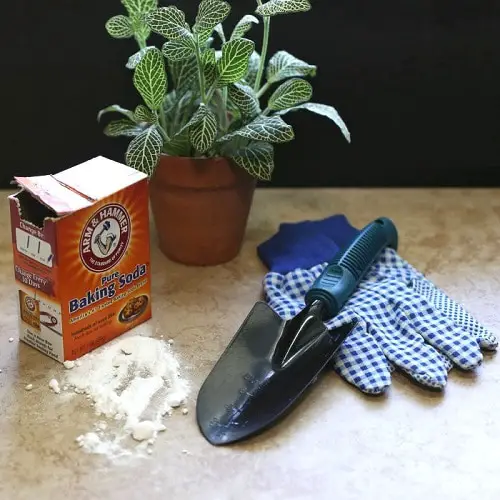
Baking soda is a natural fungicide that can effectively control fungal diseases on plants. It works by creating an alkaline environment on the plant’s surface, which prevents the growth and spread of fungi.
To make a baking soda fungicide, mix one tablespoon of baking soda, one teaspoon of vegetable oil, and one gallon of water. Shake the combination well and spray it on the plants’ surface, making sure to cover both sides of the leaves. This recipe is particularly effective against powdery mildew and black spot.
Learn how to kill plant fungus with baking soda here
2. Neem Oil Fungicide
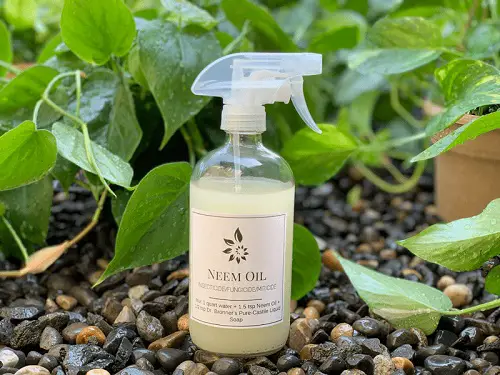 Neem oil is a natural insecticide and fungicide derived from the seeds of the neem tree. It contains compounds that have antifungal properties and can help control a wide range of fungal diseases.
Neem oil is a natural insecticide and fungicide derived from the seeds of the neem tree. It contains compounds that have antifungal properties and can help control a wide range of fungal diseases.
To make a neem oil fungicide, mix two tablespoons of neem oil and one gallon of water. Shake the mixture well and spray it on the plants, making sure to cover both sides of the leaves. This recipe is particularly effective against rust, anthracnose, and leaf spot.
Here are the best neem oil uses in the garden
3. Vinegar Fungicide

Vinegar is a natural acid that can create an acidic environment on the plant’s surface, which can help prevent the growth and spread of fungi.
To make a vinegar fungicide, mix one tablespoon of apple cider vinegar (or white vinegar), one teaspoon of baking soda, and one gallon of water. Shake the mixture well and spray it on the plants, making sure to cover both sides of the leaves.
It’s suggested if you do a patch test a day before on a couple of leaves before spraying on the entire plant.
This recipe is particularly effective against black spots and powdery mildew. It is one of the Best Homemade DIY Fungicide Recipes for Plants.
Check out the best vinegar uses in homes and gardens here
4. Garlic Fungicide
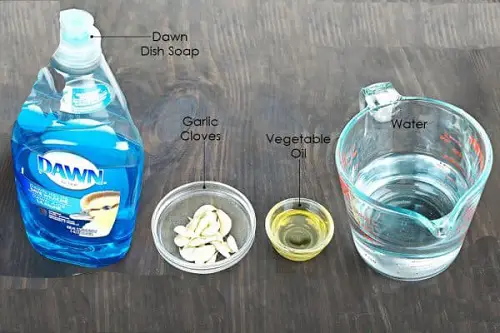
Garlic contains compounds that have antifungal properties and can help control a wide range of fungal diseases.
To make a garlic fungicide, chop four cloves of garlic and soak them in two tablespoons of vegetable oil for 24 hours. Strain the blend and add one pint of water.
Shake the remedy well and spray it on the plants, making sure to cover both sides of the leaves. This recipe is particularly effective against downy mildew and gray mold.
Here’s all you need to know about making a garlic water pesticide
5. Milk Fungicide
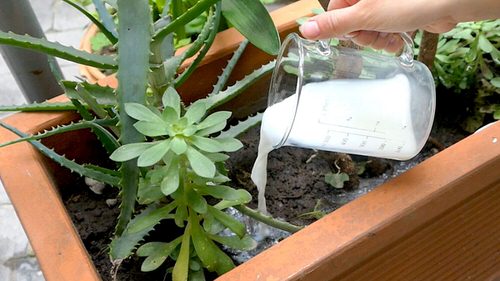 Milk can control a wide range of fungal diseases thanks to its antifungal properties. It contains lactic acid, which helps to reduce the pH of infected plant tissue, rendering it uninhabitable to many fungal species.
Milk can control a wide range of fungal diseases thanks to its antifungal properties. It contains lactic acid, which helps to reduce the pH of infected plant tissue, rendering it uninhabitable to many fungal species.
It also contains compounds that may disrupt the fungal cell wall or interfere with fungal respiration.
To use milk as a fungicide, it is typically diluted with water (1:9 ratio) and then sprayed onto the infected plants. This solution should be reapplied every few days until the problem is resolved.
Check out some excellent milk uses in the garden here
6. Chamomile Tea Fungicide

Chamomile can help managing many fungal diseases. To make a chamomile tea fungicide, steep four chamomile tea bags in one quart of hot water for 30 minutes.
Remove the tea bags and add one quart of cold water. Shake the mixture well and spray it on the plants, making sure to cover both sides of the leaves. This recipe is particularly effective against damping-off and root rot.
Learn how to grow Chamomile in pots here
7. Cinnamon Fungicide
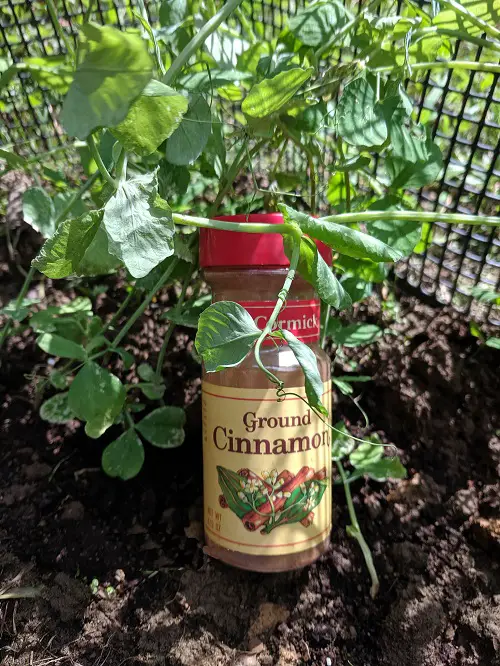
Another Homemade DIY Fungicide Recipes for Plants that works really well can be made using cinnamon. Mix one tablespoon of cinnamon powder and one gallon of water. Shake the mixture well and spray it on the plants, making sure to cover both sides of the leaves.
This recipe is particularly effective against damping-off and powdery mildew.
Check out some amazing Cinnamon dust benefits for plants here
8. Hydrogen Peroxide Fungicide
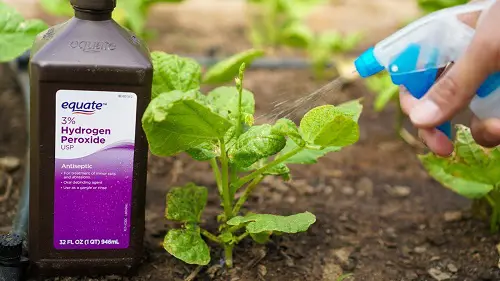 Hydrogen peroxide is a natural disinfectant that can help control fungal diseases in plants. To make a hydrogen peroxide fungicide, mix one tablespoon of hydrogen peroxide (3%) and one gallon of water.
Hydrogen peroxide is a natural disinfectant that can help control fungal diseases in plants. To make a hydrogen peroxide fungicide, mix one tablespoon of hydrogen peroxide (3%) and one gallon of water.
Shake the mixture well and spray it on the plants, making sure to cover both sides of the leaves. This recipe is particularly effective against root rot and damping-off.
Check out Hydrogen Peroxide uses in the garden here
9. Tea Tree Oil Fungicide
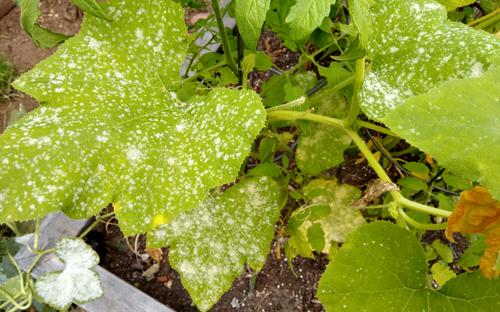
Tea tree oil is a natural antiseptic and fungicide that can help control a wide range of fungal issues. To make a tea tree oil fungicide, mix one tablespoon of tea tree oil and one gallon of water.
Shake the mixture well and spray it on the plants, making sure to cover both sides of the leaves. This recipe is particularly effective against powdery mildew and black spot.
10. Epsom Salt Fungicide
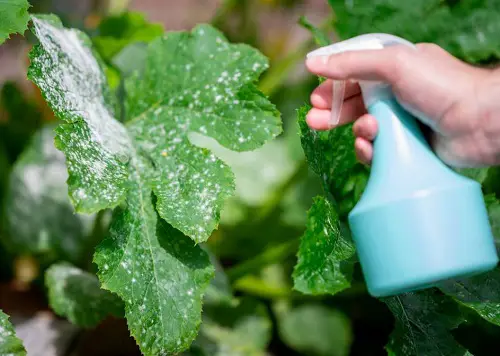 Epsom salt contains magnesium and sulfur, which can help strengthen plants and prevent fungal diseases. To make an Epsom salt fungicide, dissolve one tablespoon of Epsom salt in one gallon of water.
Epsom salt contains magnesium and sulfur, which can help strengthen plants and prevent fungal diseases. To make an Epsom salt fungicide, dissolve one tablespoon of Epsom salt in one gallon of water.
Shake the solution well and spray it on the plants, making sure to cover both sides of the leaves. This recipe is particularly effective against leaf spots and powdery mildew. It is one of the Best Homemade DIY Fungicide Recipes for Plants.
Here’s everything about how to use Epsom salt as a fungicide
The Bottom Line
While homemade fungicides are generally safe, it is still important to take precautions when using them. Always wear protective clothing, including gloves and a mask, when handling and spraying the fungicides.
Also, test the fungicide on a leaf or a small area on the stem before spraying it on the entire plant to make sure it does not cause any damage.


